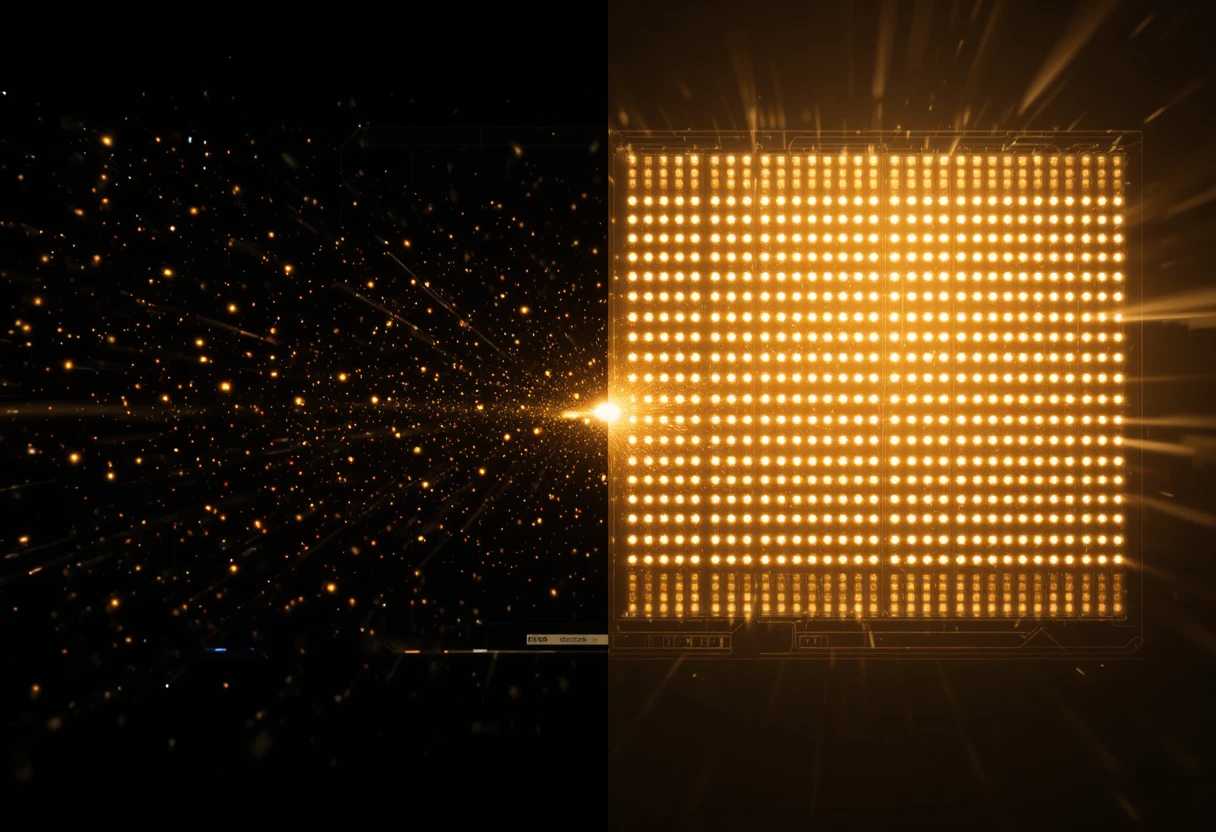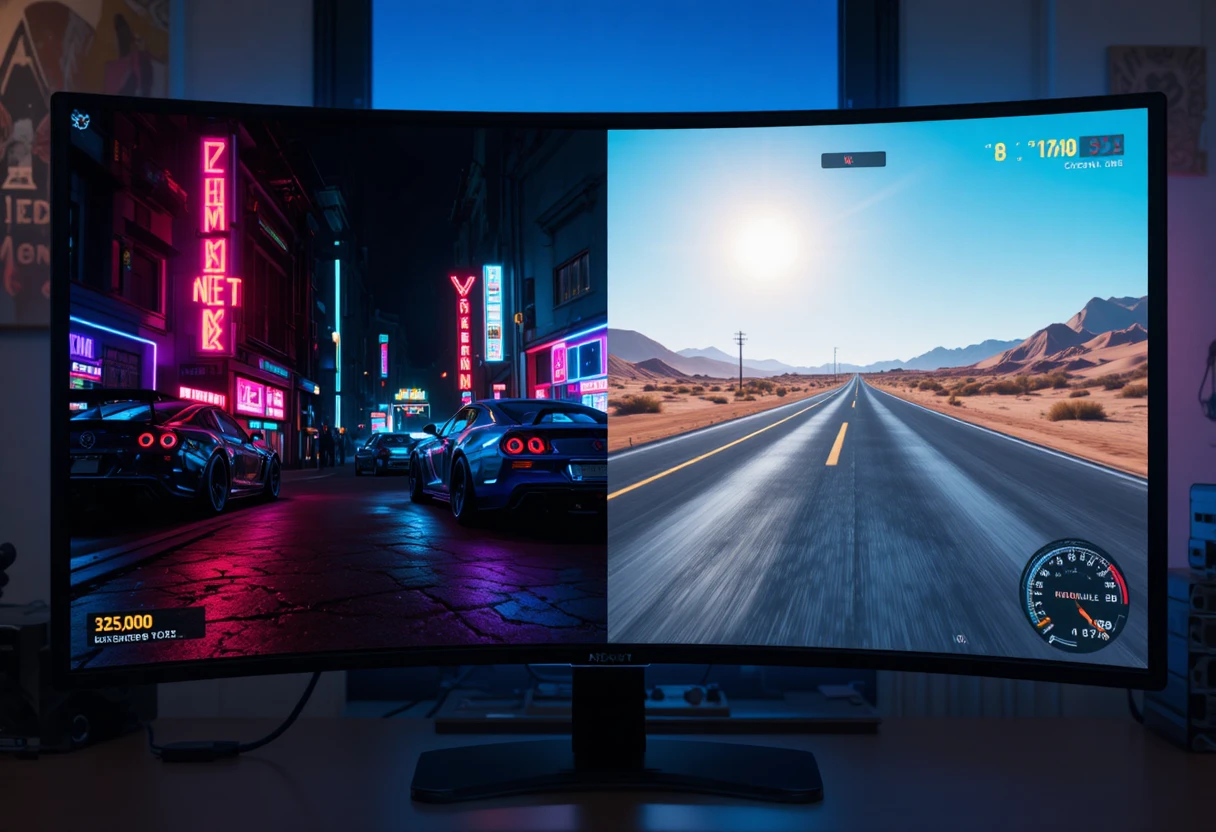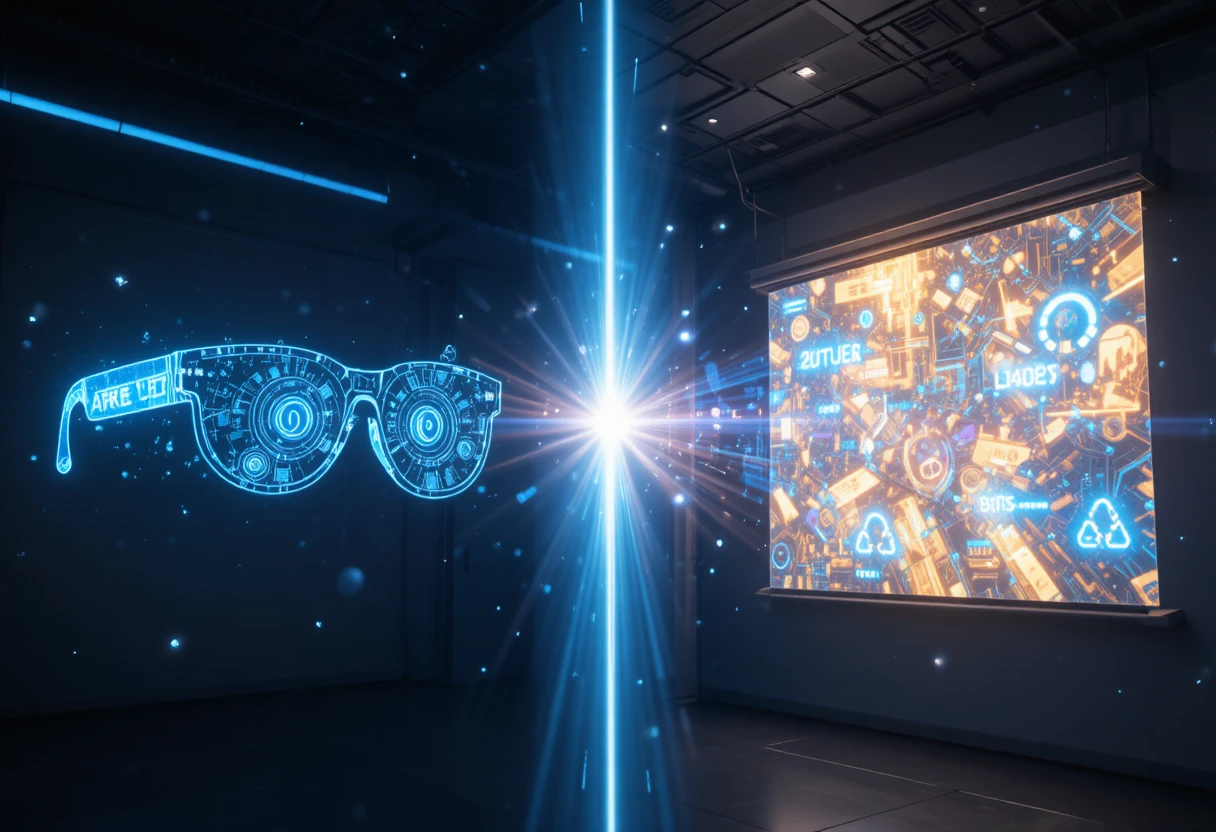OLED vs. Mini-LED Displays
The 2025 Battle for Pixel Supremacy: Blacks, Brightness, and Burn-In
In the luminous arena of 2025, OLED and Mini-LED displays reign as the twin titans of visual fidelity, each wielding distinct superpowers that define premium TVs, monitors, and mobile screens. The global TV market—valued at $124.6 billion in 2024—sees OLED shipments surge 28% YoY to 8.1 million units, while Mini-LED explodes 42% to 12.3 million, fueled by gaming monitors and ultra-bright laptops. QD-OLED (Samsung’s hybrid) achieves infinite contrast with 2,000 nits peak, while Mini-LED (TCL QM8) deploys 5,000+ zones for 2,500 nits without burn-in risk. From Sony A95L’s perfect blacks to Apple Pro Display XDR’s 1,600 nits, this 3,000-word showdown dissects technology fundamentals, 2025 flagships, performance metrics, gaming prowess, content creation, mobile integration, longevity & burn-in, cost dynamics, sustainability, and 2030 visions—arming you to choose your pixel overlord.
Technology Fundamentals: How They Work
OLED: Self-Emitting Perfection
Organic Light-Emitting Diode panels are self-emissive—each pixel (red, green, blue subpixels) generates light independently via organic compounds. No backlight. No light bleed. Infinite contrast because black pixels turn completely off.
2025 Innovations:
- WOLED-RGB (LG Display): Adds red subpixel for 30% brighter whites
- MLA (Micro Lens Array): 2nd-gen in LG G5 boosts light output 50% to 2,100 nits
- QD-OLED Gen 3 (Samsung): Quantum dots + OLED = 2,000 nits, 100% DCI-P3
Power Draw: 45% lower than LCD at 50% brightness.
Mini-LED: Backlight Brilliance
Mini-LED is an LCD evolution—thousands of tiny LEDs (0.2mm) backlight an LCD panel, controlled in local dimming zones. More zones = better contrast.
2025 Advancements:
- TCL QM8 Gen 3: 5,184 zones, 2,500 nits, 0.015 ms response
- Hisense U9N: 5,300 zones, 3,000 nits with quantum dots
- Apple XDR Gen 2: 2,596 zones, 1,600 nits sustained
Power Draw: 2–3× OLED at peak brightness.
| Tech | Contrast | Peak Brightness | Response Time | Burn-In Risk |
|---|---|---|---|---|
| OLED | Infinite | 2,000 nits | 0.1 ms | Moderate |
| Mini-LED | 1,000,000:1 | 3,000 nits | 1–2 ms | None |
2025 Flagship Showdown
OLED Champions

| Model | Panel | Peak Nits | Zones | Price |
|---|---|---|---|---|
| Sony A95L QD-OLED | 77″ | 2,000 | N/A | $4,999 |
| LG G5 MLA WOLED | 83″ | 2,100 | N/A | $5,999 |
| Samsung S95F QD-OLED | 65″ | 2,000 | N/A | $3,299 |
Sony A95L: AI Pixel Processor Pro upscales 1080p to near-8K, XR Triluminos Max color, Acoustic Surface Audio+ (screen vibrates as speaker).
LG G5: α11 AI Processor, Brightness Booster Ultimate, Dolby Vision IQ with Precision Detail.
Mini-LED Titans
| Model | Zones | Peak Nits | Refresh | Price |
|---|---|---|---|---|
| TCL QM8 Gen 3 | 5,184 | 2,500 | 144Hz | $1,999 |
| Hisense U9N | 5,300 | 3,000 | 144Hz | $2,799 |
| Apple Studio Display Pro | 2,596 | 1,600 | 120Hz | $4,999 |
TCL QM8: Halo Control eliminates blooming, IMAX Enhanced, Game Accelerator 240.
Hisense U9N: Hi-View AI Engine, 3,000 nits sustained, Mini-LED X with quantum dots.
Performance Metrics: Blacks, Brightness, Motion
Contrast & Black Levels
OLED: Infinite. A single black pixel = zero light. Starfields in Interstellar? Pure void.
Mini-LED: 1,000,000:1. TCL QM8’s 5,184 zones minimize halo, but light bleed exists around subtitles.
Winner: OLED for cinematic darkness.
Peak Brightness & HDR
Mini-LED: 3,000 nits (Hisense U9N). HDR10+ content like Mad Max: Fury Road explodes.
OLED: 2,100 nits (LG G5 MLA). Bright, but specular highlights clip above 1,500 nits.
Winner: Mini-LED for sunlit rooms, HDR punch.
Motion Handling & Response Time
OLED: 0.1 ms pixel response. No ghosting in John Wick fight scenes.
Mini-LED: 1–2 ms. TCL’s 144Hz + BFI reduces blur, but PWM flickering at low brightness.
Winner: OLED for zero lag, gaming fluidity.
Viewing Angles
OLED: Perfect—colors hold at 70° off-axis.
Mini-LED: IPS panels maintain 80% color at 45°, but VA variants drop to 50%.
Winner: OLED.
Gaming Prowess: Input Lag, Refresh, VRR
Input Lag & Refresh Rates
OLED:
- Sony A95L: 4K/120Hz, 4.2 ms lag, VRR + ALLM
- LG C5: 144Hz PC mode, 1 ms lag
Mini-LED:
- TCL QM8: 4K/144Hz, 240Hz @ 1080p, 6 ms lag
- Samsung QN90D: 4K/165Hz, 9 ms lag
Winner: OLED for sub-5ms responsiveness.
Burn-In Mitigation
OLED:
- Pixel Shift, Logo Dimming, Screen Saver
- LG G5: AI Burn-In Guard shifts static HUDs in games
Mini-LED: Zero risk.
Winner: Mini-LED for 24/7 esports HUDs.
PC Gaming: Color Accuracy & Adaptive Sync
OLED: 100% DCI-P3, Delta-E < 1, G-Sync Ultimate
Mini-LED: 98% DCI-P3, Delta-E < 2, FreeSync Premium Pro
Winner: OLED for color-critical play.
Content Creation: Color, Calibration, Sustainability
Color Accuracy & Workflow
OLED:
- Sony A95L: Calman Ready, Dolby Vision Pro, 10-bit gradient perfection
- Eizo ColorEdge OLED: Hardware calibration, 99% Adobe RGB
Mini-LED:
- Apple Studio Display Pro: P3 wide color, True Tone, nano-texture glass
- ASUS ProArt PA32UCG: 1,152 zones, Delta-E < 1, HDR1400
Winner: Tie—OLED for gradients, Mini-LED for brightness.
Longevity & Burn-In Reality
OLED:
- MTBF: 100,000 hours to 50% brightness
- 2025 Mitigation: MLA + heat sinks reduce degradation 40%
- Warranty: 5 years (LG, Sony)
Mini-LED:
- MTBF: 60,000 hours (LEDs), but no burn-in
- Warranty: 3 years
Winner: Mini-LED for static content (news, coding).

Mobile Integration: Phones, Tablets, Laptops
OLED in Mobiles
- iPhone 17 Pro: LTPO 4.0 OLED, 1–120Hz, 2,000 nits, ProMotion
- Samsung Galaxy S25 Ultra: M14 QD-OLED, 2,600 nits, anti-reflective coating
Mini-LED in Laptops
- MacBook Pro 16″ M5: Liquid Retina XDR, 1,600 nits sustained, 1,000,000:1
- ASUS ROG Zephyrus G16: Mini-LED, 2,500 nits, 240Hz
Winner: OLED for pocket perfection, Mini-LED for workstation brightness.
Cost Dynamics: Price per Performance
| Size | OLED Price | Mini-LED Price | Price Gap |
|---|---|---|---|
| 55″ | $1,799 (LG C5) | $999 (TCL QM7) | 80% |
| 65″ | $2,699 (Sony A80L) | $1,499 (Hisense U8N) | 80% |
| 77″ | $4,999 (Samsung S95F) | $2,999 (TCL QM8) | 67% |
OLED Premium: Justified by perfect blacks, burn-in mitigation.
Mini-LED Value: 2.5× brightness, no burn-in, 50% cheaper.
Sustainability & Power Efficiency
Power Consumption (1000 nits, 50% APL)
| Tech | 55″ | 65″ | 77″ |
|---|---|---|---|
| OLED | 120W | 180W | 250W |
| Mini-LED | 300W | 450W | 600W |
OLED: 60% more efficient at typical brightness.
Mini-LED: Recyclable backlight, no organic degradation.
Winner: OLED for energy, Mini-LED for longevity.
Challenges & Future-Proofing
OLED Hurdles
- Burn-in (mitigated, not eliminated)
- Brightness ceiling (2,100 nits max)
- Cost (2× Mini-LED)
Mini-LED Hurdles
- Blooming (5,000+ zones minimize, don’t erase)
- Thickness (2–3× OLED)
- Viewing angles (VA panels)
2030 Visions
| Tech | 2030 Projection |
|---|---|
| Micro-OLED | 4K per eye, 10,000 nits, AR glasses |
| Tandem OLED | 4,000 nits, 200,000-hour lifespan |
| Mini-LED 2.0 | 20,000 zones, 5,000 nits, rollable |
| EL-QD | Best of both: self-emissive + quantum dots |

Conclusion: Choose Your Champion
In 2025, OLED is the cinematic poet—infinite blacks, perfect motion, color sorcery—but demands care and coin. Mini-LED is the solar warrior—blinding brightness, burn-in immunity, value—but concedes in purity.
Choose OLED if:
- You worship Dune‘s shadows
- Game in dark rooms
- Edit photos with surgical precision
Choose Mini-LED if:
- Your living room is a sunroom
- You stream 24/7 sports
- Burn-in paranoia haunts you
The future? Hybrid panels—Tandem OLED + Mini-LED backlights—loom by 2028. But today, your choice isn’t compromise. It’s allegiance.
Pick your pixel throne. The screen awaits.